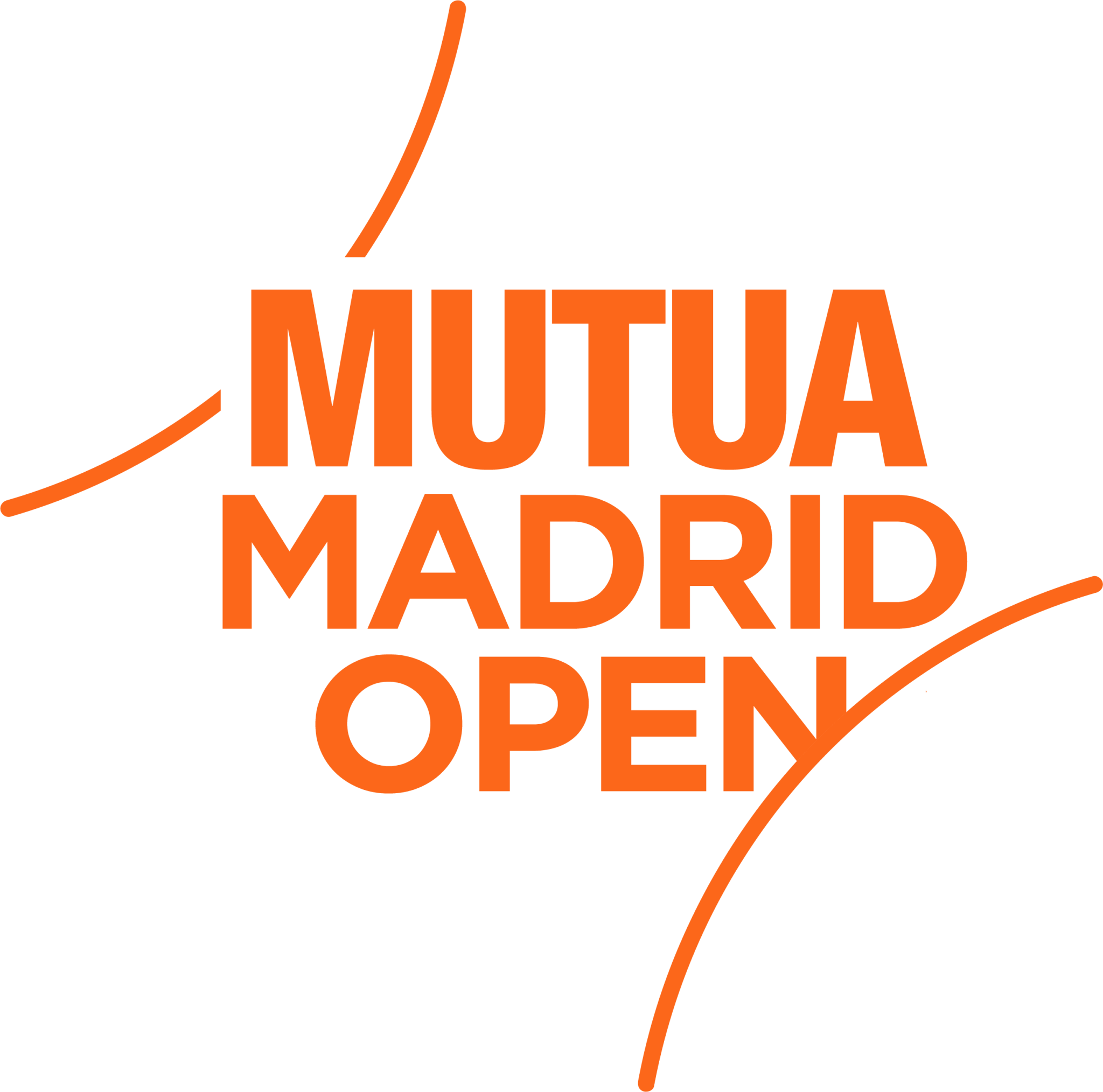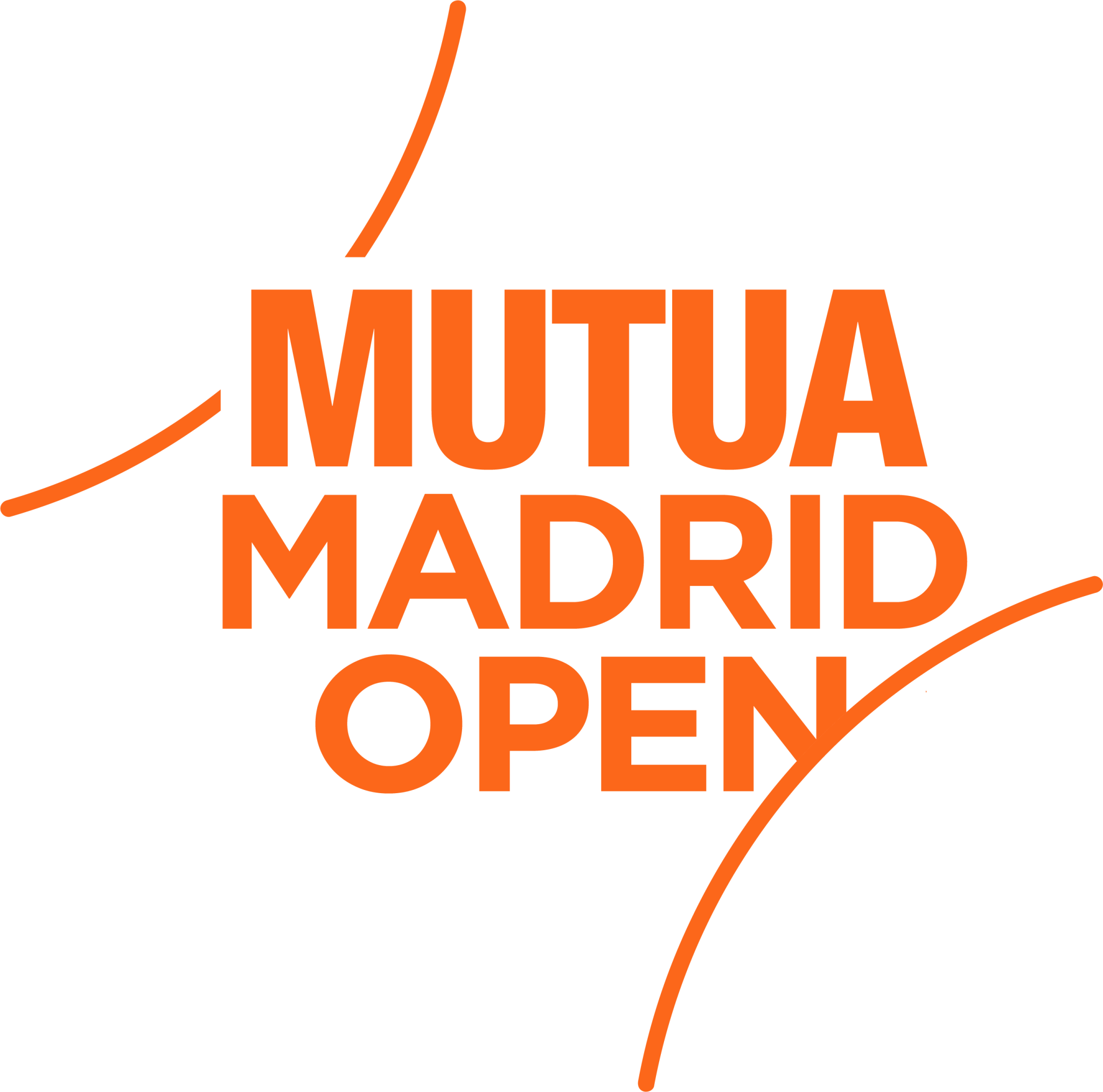It is the object everyone is trying to get their hands on in the Caja Magica. David Rodríguez Caballero presents the work of art – the fourth he has created for the Mutua Madrid Open – the winners will raise to the sky on Saturday 3 May in the women’s competition, and Sunday 4 May for the men.
How do you go about the challenge of creating the Mutua Madrid Open trophy for the fourth consecutive year?
I approach it with excitement, as I do every year and every new project. Honestly, for me it’s very rewarding in terms of developing an idea around sport. I’ve called the 2025 piece Kineo, which is from classic Greek, as I’ve always done, and means ‘movement’, because it was inspired firstly, formally, on the volumetrics of a sphere, of a tennis ball. Deconstructing it and creating a very geometric kind of mandala, by folding, which is an element with which I have developed the three-dimensionality of my sculpture. Also, it’s inspired by the serve, when the player’s movement begins, when the game begins. I noticed that the movements are similar to a circle; they start at a central point of the athlete’s body, and I wanted to include that movement through the deconstruction of the sphere, which represents a tennis ball.
What are the origins of the trophy?
The origins, the most important part, are basically that in 2023 I also worked with the shape of the ball, but through a curve. But this time it’s by folding a three-dimensional structure that represents the axes of a sphere. Then from there it’s folded and multiple spaces are created. I’ve used two materials for the first time; gold and silver, which are the metals of a final, and I thought it was very important that they were represented.
What came first, the name or the sketch?
It all comes together. The artistic process is not linear, it’s not three-dimensional, it’s hypertext, you dot around. You’re clear on what you want to work with, but also the things you read and discover influence the piece, so everything comes together at once.
Did you already have some ideas last year?
Yes. There’s always something at the tournament that catches my eye, so I use it for the next one. This year it was the movement of the ball. Last year I used a forging process, and this year I worked with construction.
What materials is it made from?
I used aluminium because steel would have made it too heavy. Also brass, which are materials I use a lot and they form part of my sculptural vocabulary. They’re finished with sanding and erosion, which creates vibration through light.
What do you want people’s first impressions to be when they see the trophy?
I want it to have a quick visual impact. I think this trophy is very rotund, it has a spherical shape that implies perfection and, because of the folds, it’s very dynamic. It has a quick emotional impact.
Does the fact that the ball is the inspiration make the construction more difficult?
Yes, because a sphere is very geometric and it depends on a centre point. That really limits you, but it also offers a lot of possibilities if you do a good job.
What are its vital statistics? How big is it and what does it weigh?
It weighs 4 kg and is 44 cm tall, similar to the previous ones. It is as wide as it is tall, so if I’d made it taller it would be out of proportion. It’s a very well-balanced piece and it changes a lot depending on where you look at it from.
Could it be said that this is a 100% Spanish trophy?
Yes, although the inspiration comes from abroad, because I travel a lot. But the production was completely Spanish, made at the Capa Foundry, just like the previous trophies.
What inspired you for this piece? How has it evolved since the first trophy?
The first one, Arete, was closer to one of my sculptures. Then I started getting into the world of tennis. Every year has been a challenge and I’ve become more passionate about it. I’m interested in the relationship with classical Greece, the values, the games… all of that has an influence.
Do you have a trusty advisor during the process?
It’s a very intimate process. I spend a lot of time alone in the studio, but I share things with my partner and some of my close friends. I need feedback, but in a close circle.
Have you spoken to any tennis players? What have they said to you?
Yes, I’ve congratulated all the winners. I think they’re happy to receive a sculpture as a symbol of success. It’s really beautiful that, as well as a monetary prize, they take home a piece of art.
Have you ever seen one of the trophies on display at a tennis player’s home?
No, but I hope they’re in beautiful homes. Because they have a base, it’s hard to position them incorrectly, apart from last year’s.
Are you considering making a gallery of all the trophies?
Yes, the idea is to make an art collection. Never to repeat a sculpture each year, but to create a collection linked to tennis and art, which can be exhibited and explained.
What are your impressions of the Mutua Madrid Open?
I think it’s the epitome of corporate innovation. They gave me complete freedom, which is the greatest thing you can give an artist. They’ve created a very attractive experience that brings tennis to the masses.
What kind of art would you associate with Djokovic?
I see him more as a pictorial piece, colourist, with rhythm. More two-dimensional than sculpture.
How many pieces might you make in one year?
I work by group, not just with one piece. It depends on the type of job. Some last months, others three weeks. It all blends and evolves together.
What is your medium of work?
My medium is paper. I do automatic drawings, mock-ups, then I go back to a more detailed drawing, then I go to metal. It’s a whole process.
Do you utilise technology?
Last year I used computer programmes and 3D for the first time. It was interesting, but I need contact with the material. I’m really big on working with my hands.
What materials are in fashion?
I almost always work with metal; aluminium, steel, brass, copper, bronze. Also vinyl in more two-dimensional pieces, but metal is my medium.
What ATP Ranking would Spanish artists have?
We haven’t had much institutional support. The achievements have been independent. But that also makes it global. The important thing for me is the quality, not the nationality.
What’s the strangest job you’ve ever been asked to do?
Some 7-metre sculptures for a house in Latin America. We had to put them inside before they finished building. It was a big challenge, but very satisfying.
Do you have any new jobs from athletes?
I know there are athletes that have my work, but I don’t always know who the end client is because I work with a gallery.
Is your best work yet to come?
Yes, always. My work is a constant process. Now I’m working with suspended pieces that float, from monumental pieces to others that are smaller. That really interests me.
Does it bother you when players bite the trophy?
I do suffer slightly because they are protected, they’re delicate. But one of my conditions is that the trophy works visually from any angle when it is picked up. I hope Alcaraz wins, it would be his third of my trophies.
Would you like to thank anyone?
Yes, well, of course I’m so happy that this initiative has become a constant, that it forms part of my life, that I make the sculpture every year that forms part of the Mutua Madrid Open tournament. I’m very grateful, especially to Gerard, who’s the president and was the one that put his trust in me to do this. He hasn’t put any limits on me and I think he’s someone who has the intelligence to give the artist freedom and to achieve things, and also to make everything easy. He’s even made contributions, the idea of putting clay on the sculpture – because I was adding areas of colour – was his. I’m very grateful to the whole team. It really is a pleasure and everything is so easy. Also to Natalia, and Orián too, I hope we continue to work together on this wonderful initiative.




